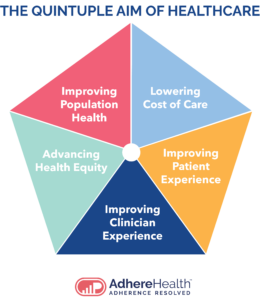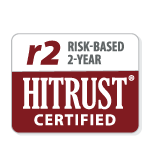Published on .
The quest for continuous improvement is a hallmark of the Medicare Advantage program. The Star Ratings system holds MA plans to high standards of care quality, smart spending and member experiences with a “survival of the fittest” approach that pushes plans toward ever greater achievements.
CMS is constantly looking for new ways to incent MA plans to raise their performance on key metrics, and the Contract Year 2024 Proposed Rules include a number of big changes that will challenge plans to up their game, including a major shift in the Quality Improvement (QI) Hold Harmless provision.
In previous years, the QI Hold Harmless provision exempted high-performing 4.0+ Star plans from certain penalties if they fell short on a set of heavily weighted measures. Now, CMS is proposing that only 5-Star plans should be “held harmless,” leaving hundreds of plans vulnerable to negative outcomes in the overall scoring methodology.
Lower Star Ratings mean reduced access to Quality Bonus Payment (QBP) incentives, more restrictions on marketing, and less favorable perception from potential members shopping for coverage.

If the proposal becomes finalized, MA plans in the 4.0- to 4.5-Star range will start to feel the squeeze on the quality improvement front and will need to invest additional resources into raising the bar on this key set of measures.
What is the QI Hold Harmless provision and how will it change?
Quality improvement measures demonstrate how much a plan’s performance has improved or declined from one performance year to the next. Part C and Part D each have their own QI measure (C25 and D04, respectively). These measures are 5x-weighted, making them very influential for a plan’s overall Star Rating.
A score of 1.0 to 2.0 Stars on a given QI measure generally means the plan’s performance has declined over the previous year. Three Stars indicates relatively neutral performance, while 4.0 to 5 Stars demonstrates improvement.
Currently, the QI Hold Harmless provision gives 4.0+ Star plans some flexibility in how the QI measures are applied to their overall Star Rating for the year. If a plan only achieves 1.0 to 2.0 Stars for quality improvement in a given year, which would detract from their score, the plan can choose to exclude the measure from their calculations and avoid the statistical penalty from poor QI performance.
This has been a big win for plans on the edge of the all-important 4.0-Star threshold. About 51% of MA-PD plans (26 contracts) earned 4.0 Stars or higher for their 2023 overall rating. For some of these plans, avoiding the potential negative impact of the 5x weighted QI measure through protection of the Hold Harmless provision is just enough to keep them in the coveted 4.0+ Star realm, which comes with access to QBP incentives and other important perks.
Now, CMS is planning to change the game. The proposed rule for CY 2024 would change the Hold Harmless provision so that only 5-Star plans can throw out their poor QI measure scores. 4.0- to 4.5-Star plans would be required to include their QI measure performance in their calculations, even if it drops them back into 3.0- to 3.5-Star territory for their overall Star Rating.
Industry experts believe that between a third to a half of 4.5-Star plans may drop to 4.0 Stars due to the proposed change to the Hold Harmless provision, while a similar number of 4.0- Star plans may slip down to 3.5 Stars.
Why is CMS proposing this change?
 CMS is focused on ensuring that the Medicare Advantage program meets the Quintuple Aim of Healthcare: better outcomes, lower spending, better experiences for beneficiaries as well as clinicians, and most recently, advancing health equity. This means using every lever at their disposal to motivate plans to address critical quality issues, such as access to care, avoidable hospitalizations, medication adherence, overcoming social determinants of health barriers, and exceptional customer service.
CMS is focused on ensuring that the Medicare Advantage program meets the Quintuple Aim of Healthcare: better outcomes, lower spending, better experiences for beneficiaries as well as clinicians, and most recently, advancing health equity. This means using every lever at their disposal to motivate plans to address critical quality issues, such as access to care, avoidable hospitalizations, medication adherence, overcoming social determinants of health barriers, and exceptional customer service.
4.0- to 4.5-Star plans are well on their way to meeting CMS’s goals, but the agency feels there’s still significant room for improvement.
“We believe the Hold Harmless provision for the highest rating is not needed for 4.0- to 4.5-star contracts because they still have the potential to increase scores across measures and thus their Star Ratings,” CMS stated in the proposed rule.
CMS is betting that requiring all 4.0+ Star plans to include the QI measure in their calculations will keep plans on the path to performance improvement, while giving shoppers a more transparent look into plans that are focused on getting better every year.
A larger focus on quality improvement is also important for improving health equity, CMS believes. Plans will be required to include documented disparity reduction activities as part of their quality improvement efforts, placing additional emphasis on the ability to identify and address social risk factors (SRFs) for underserved populations.
There is also a financial component to the proposal. CMS is actively seeking to control program spending wherever possible, and the enormous QBP pool is an area ripe for greater attention. The agency’s suggested adjustments in the 2024 proposed rules may reduce QBP spending by around $25 billion over the next decade. The QI hold harmless provision changes are likely to account for a whopping $19.5 billion of that total.
That means more competition for fewer incentive dollars, giving MA plans yet another excellent reason to stay squarely in the QBP zone—and even reach 5 Stars, if possible, to avoid the risks of a poor QI score causing a slide backward.
How can MA plans beat the math and achieve higher Stars performance?
Staying on the more desirable end of Stars performance scale requires MA plans to take a close look at their current quality improvement activities across the entire range of Star Ratings measures, and especially those areas that have an outsized effect on scoring, such as medication adherence.
Medication adherence is a “force multiplier” for Stars, and plans have plenty of room to improve their scores in this area. Doing so could open up an avenue to 5-Star performance, due to the heavy weighting of measures around the use of appropriate drugs for chronic conditions, and the resulting boosts to member experience metrics from beneficiaries who feel recognized and supported by their pharmacy teams.
Plans should consider investing in advanced analytics tools, such as those offered by the Adhere Platform, that enable year-round adherence support, including alignment of medical and pharmacy claims to generate comprehensive, longitudinal portraits of each member’s health status and rising risks.
 By using analytics to identify and prioritize individuals with medication adherence concerns, plans can target proactive outreach to these members and address potential issues before they manifest as drug therapy problems (DTPs) or avoidable ER and hospital use.
By using analytics to identify and prioritize individuals with medication adherence concerns, plans can target proactive outreach to these members and address potential issues before they manifest as drug therapy problems (DTPs) or avoidable ER and hospital use.
These outreach activities should be led by pharmacists and should leverage motivational interviewing techniques to uncover SRFs and other clinical or non-clinical issues that may be contributing to low adherence rates. Using these insights, plans can connect members with community resources that help improve health equity, but connecting members to community services that help them overcome SDOH barriers to adherence. This can include transportation to fill prescriptions, access to a local food bank, and financial services.
Ongoing quality improvement is only going to become more important as CMS’s proposed changes take hold. Engaging high-risk members around medication adherence is an important, highly effective strategy for putting plans on the road to success.
Plan leaders will need to devote time and resources to understanding how the upcoming adjustments to the QI Hold Harmless provision may affect their plan, and then implement proactive, coordinated efforts like those described above to ensure their Star Ratings scores stay at the 4.0-Star mark in 2024 and beyond.
Looking to improve your plan’s medication adherence, especially in your highest-risk members? Contact AdhereHealth today for a consultation.
